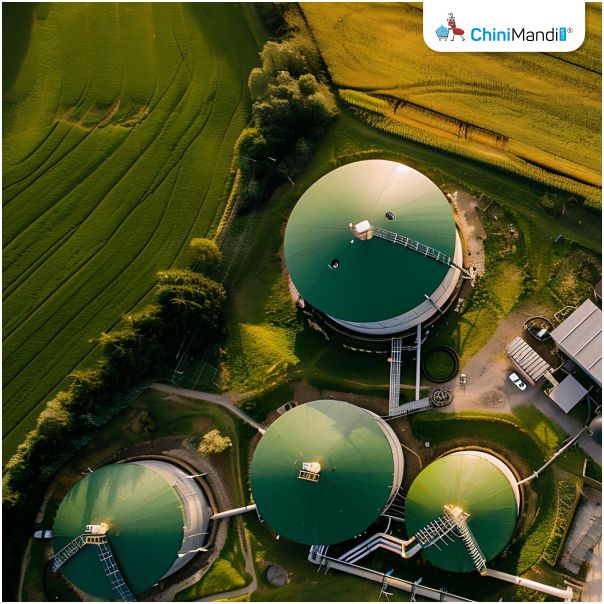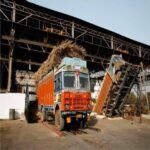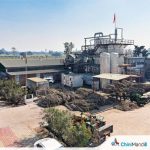With an increasing focus on sustainable practices and renewable energy sources, sugar mills in India are exploring innovative avenues to maximize their resources and minimize waste. The sugar industry which was once traditionally focused on producing sugar is now on the verge of a green revolution. One such opportunity is the production of biogas from press mud, a residual byproduct in the sugar-making process. Another key product which is there in preparing sugarcane juice is Ethanol, it helps enable the industry to adopt greener alternatives to fossil fuels. As the demand for renewable energy grows, biogas production presents a promising opportunity for sugar mills to enhance their revenue streams while contributing to a cleaner environment.
How is Pressmud Recognised as a Resource for Green Energy Production?
Rich in organic content, pressmud is ideal for anaerobic digestion, a process that breaks down organic matter in the absence of oxygen, producing biogas, primarily composed of methane and carbon dioxide. This biogas can be further purified and used as a clean energy source, replacing conventional fossil fuels and reducing greenhouse gas emissions. The utilization of pressmud for biogas production not only helps in waste management but also provides an opportunity for sugar mills to generate additional revenue. By converting pressmud into biogas, sugar mills can produce electricity, and heat, or even upgrade biogas into biomethane for use in vehicles. This diversifies the revenue streams for sugar mills beyond sugar production and contributes to the broader energy transition efforts in India.
This year CEID Consultants and Engineering Pvt Ltd, a leading biogas manufacturer in India, has established two Compressed Biogas (CBG) plants in collaboration with the Punjab Sugar Federation which is India’s first sugar federation, in Bhogpur and Batala in Punjab, serving clusters of 7 sugar mills, respectively. These plants are designed to process 100 TDP (tons per day) of pressmud. This initiative involves creating clusters of sugar mills in each location—four mills in Bhogpur and three mills in Batala—enhancing the synergy between these facilities to optimize biogas production.
Benefit in Terms of Revenue Generation
With effective utilization, this pressmud could produce millions of cubic meters of biogas, which can be converted into electricity or compressed biogas (CGB). This conversion can provide an additional income stream for sugar mills, enhancing their profitability and sustainability. Furthermore, by producing biogas, sugar mills can reduce their energy costs. Biogas can be used to power the mills themselves, thereby reducing reliance on external electricity sources and saving costs. The surplus energy produced can be sold to the grid, generating further income. Additionally, the byproducts of biogas production, such as digestate, can be used as a high-quality organic fertilizer, creating another revenue stream for mills by selling it to local farmers.
If a sugar mill crushes 100000 quintal cane in a day then with a ratio of 3.5-4% i.e 350 – 400 tons per day of pressmud gets generated daily. By using such quantity a sugar mill can easily go for a 10TPD plant which could generate a revenue of 6.5 lakhs per day to the sugar mill. Additionally, the production of the FOM & LFOM provides an additional revenue stream for sugar mills, further enhancing their profitability.
Current Market Scenario of Pressmud
In 2010, disposal of press mud was a big challenge for the Sugar industry, but with time coming up new technology, and utilization tactics press mud is being utilized in boilers, brick manufacturing, pallets, briquettes, and now even in CBG production. From 2010 – 2015 sugar mills used to pay third parties for disposing of the press mud. With the growing awareness and active involvement of entrepreneurs in the sugar industry, there has been a noticeable increase in the number of inquiries about procuring pressmud. This heightened demand has led to a significant rise in its price to ₹400 per ton and beyond.
Current Market Scenario of Biogas
Before 8 years, there were hardly 700-800 CNG stations there, today the count has increased by 7000. To support the effective adoption of CNG, government bodies such as the Petroleum and Natural Gas Regulatory Board (PNGRB), the Ministry of New and Renewable Energy (MNRE), and the Ministry of Petroleum and Natural Gas (MOPNG) have introduced various policies and subsidies. For instance, the PNGRB has allocated districts to 26+ CGD (City Gas Distribution) entities for laying down pipelines, and initiatives like the Sustainable Alternative Towards Affordable Transportation (SATAT) are also in place.
The adoption of biogas production by sugar mills is not just an opportunity but a necessity. It aligns with the national objective of enhancing renewable energy capacity and reducing carbon footprints. The environmental benefits, coupled with economic incentives, make it an attractive proposition for sugar mills looking to innovate and stay competitive.
Investment and Cost Considerations
There are numerous strategic advantages when investing in biogas production for sugar mills. It has access to plentiful biomass, especially in the form of press mud which is a byproduct of sugar production. By including the biogas production, the entire waste can be converted into a valuable resource which can reduce disposal costs and also create a new revenue stream. When starting the construction of the biogas plant, the procurement of necessary machinery and the implementation of systems to capture and process biogas are included in the initial investment. However, sugar mills can often leverage economies of scale, reducing per-unit costs. Furthermore, sugar mills are positioned to benefit from long-term returns through energy generation and potential government incentives aimed at promoting renewable energy.
For the past 10 years, CEID has gained extensive experience in producing Compressed Biogas (CBG) using pressmud and spent wash. Their in-house purification technology ensures 98+% purity with minimal operational expenditure (OPEX). Additionally, their custom-designed machinery for biogas generation maximizes biogas yield from pressmud, enhancing overall efficiency and output.
Employment Generation
When a plant is built some costs are associated with civil, mechanical, electrical, software, and electronics. For example, in setting up a plant for 10 TPD, civil construction employs approximately 150 workers for the entire year. Whereas the mechanical, electrical, and software parts employ approximately 500 workers directly. Whereas, the sustained operations of the CBG factory will produce direct employment for around 100 individuals, delivering consistent jobs and revenue to local communities. It will also create around 1,000 indirect jobs in adjacent sectors and services like transportation, supply chain management, and maintenance.
Author is DGM – Marketing of CEID Consultants and Engineering Pvt Ltd
















